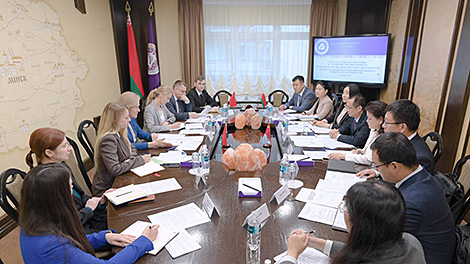Business news
Economy Ministry reports steady growth in Belarus-China trade and economic cooperation

Photo courtesy of the Economy Ministry
MINSK, 13 November (BelTA) – Trade and economic cooperation between Belarus and China is demonstrating steady growth, Deputy Economy Minister of Belarus Alesya Abramenko said at the 3rd meeting of the working group on trade facilitation, held under the Belarusian-Chinese Intergovernmental Cooperation Committee, BelTA learned from the ministry’s press service.
“Belarusian exports of goods and services to China have doubled in the current five-year period, confidently exceeding the $2 billion mark,” said the deputy minister. “Equipment and components are actively being supplied to us from China, forming the technological base for existing production processes and laying the foundation for new capacities.”
Wang Kaixuan Director of the Department of Eurasian Affairs at China’s Ministry of Commerce, noted that China is Belarus’ second-largest trading partner. He affirmed China’s readiness to increase imports of high-quality Belarusian agricultural and food products and facilitate the expansion of its supply chain.
The parties expressed confidence that a forthcoming agreement on trade in services and investment will provide further impetus to bilateral cooperation. The document is set to enter into force in early 2026. The meeting yielded a number of mutually beneficial agreements and identified key areas for joint work. Discussions focused on expanding the range of Belarusian products supplied to China, accelerating accreditation and certification, lifting trade restrictions, and developing a Belarusian national pavilion on China’s largest trading platforms.
Collaboration in digital trade areas was also discussed, including smart logistics, online payments, online education, telemedicine, and cloud exhibitions. Further topics included developing industrial cooperation, involving Chinese companies in joint ventures, and promoting sophisticated products in international markets.
The agenda also covered the further development of the China-Belarus Industrial Park Great Stone and its resident companies, strengthening transport and logistics links, building efficient transport corridors, actively expanding air travel, and increasing the frequency and destinations of flights between the two countries.







 print version
print version make home page
make home page add to bookmarks
add to bookmarks

